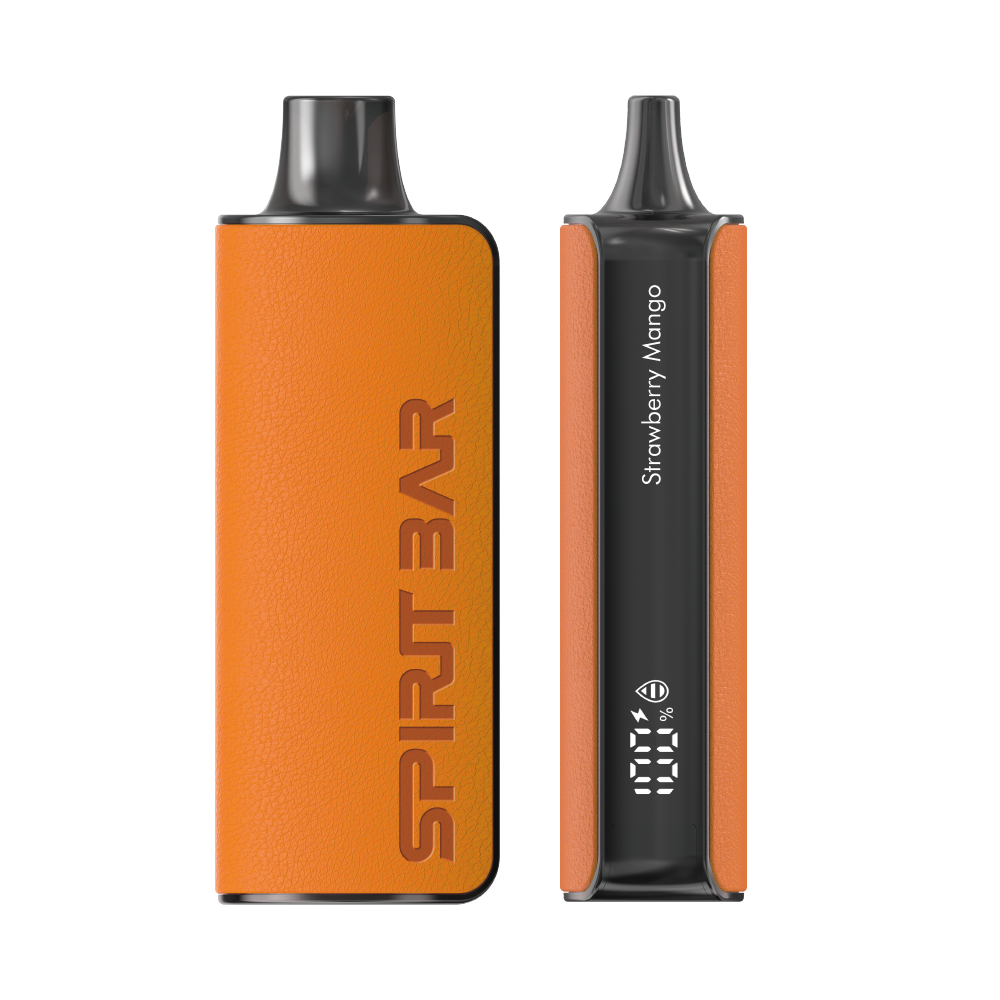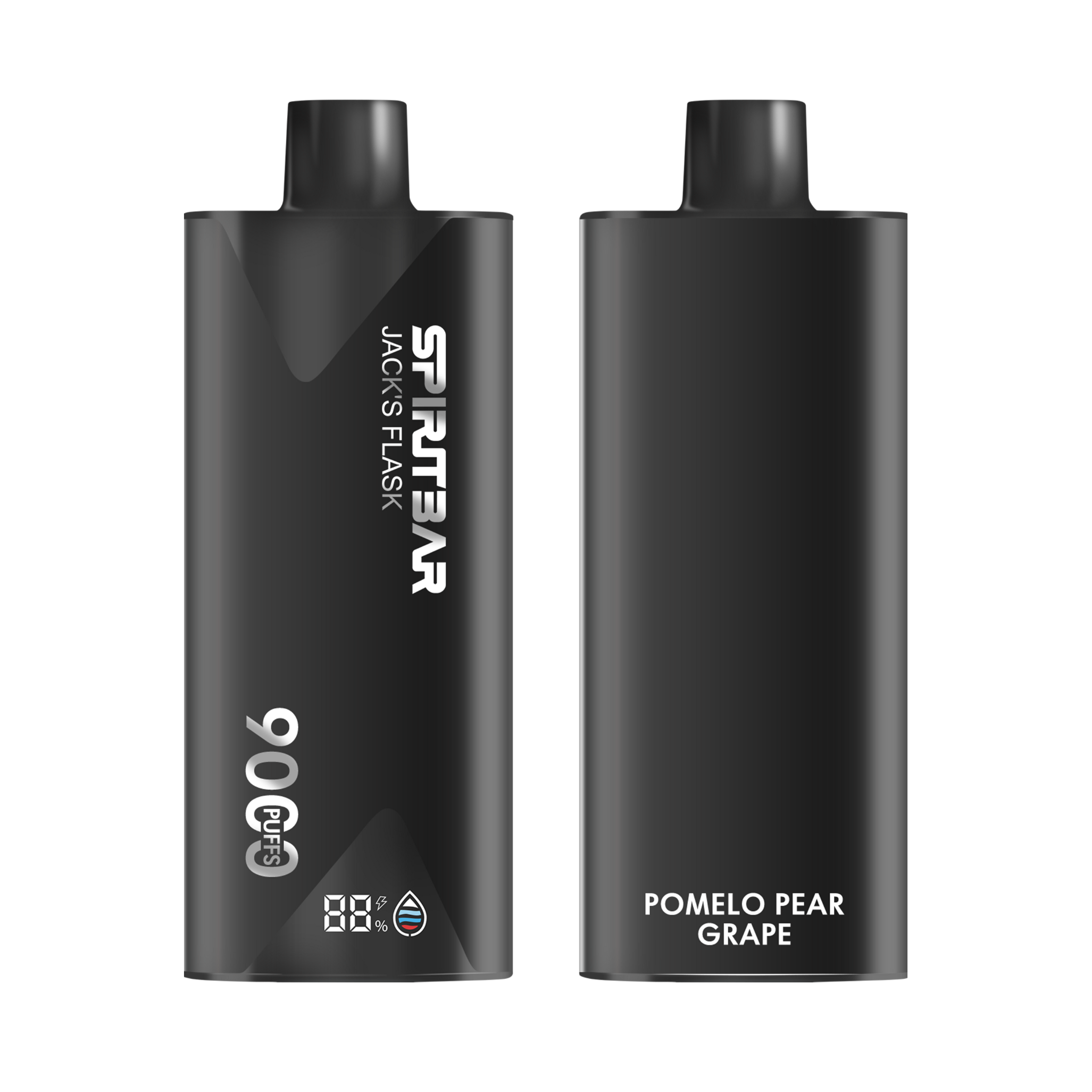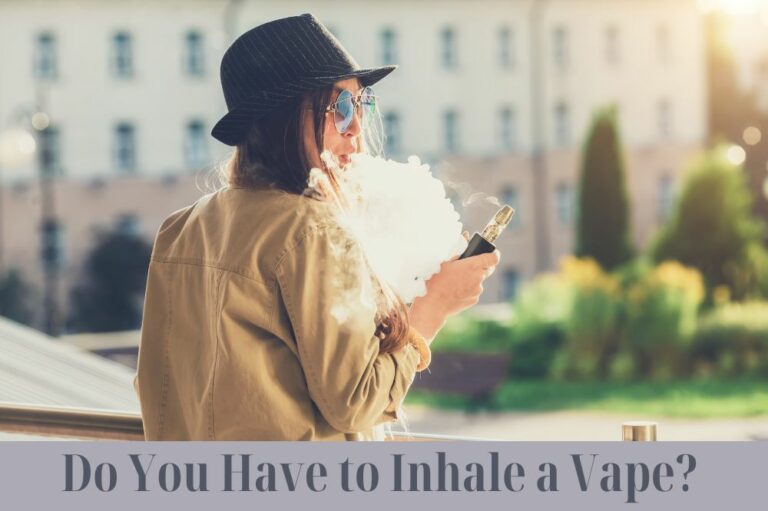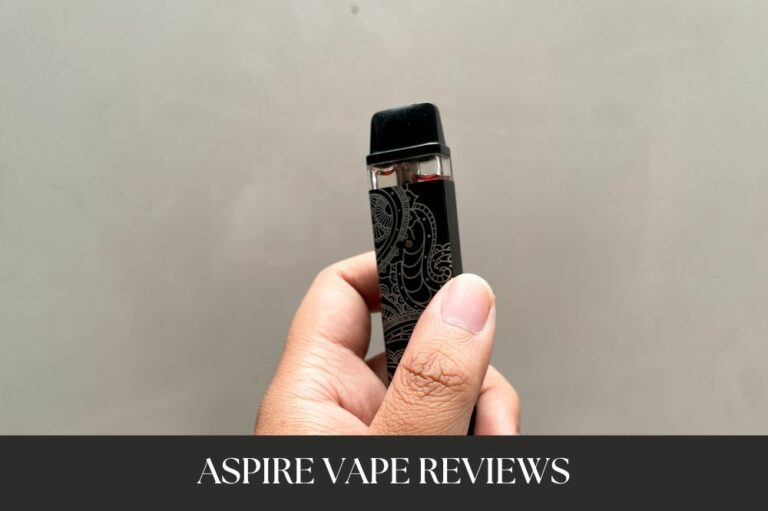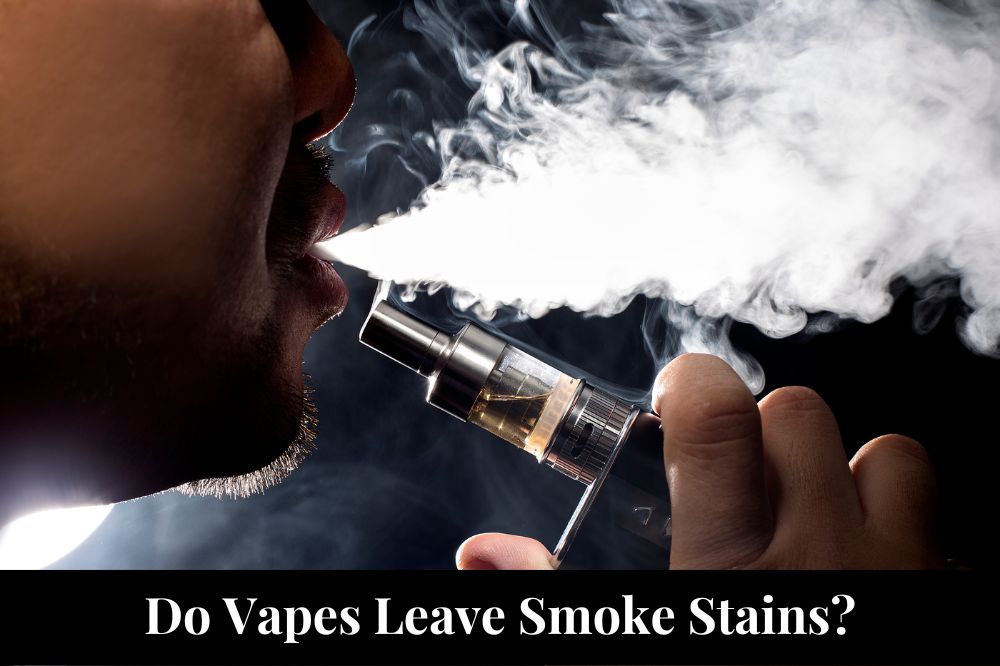
Do vapes leave smoke stains? This is a common question among vapers who enjoy using their devices indoors. The short answer is that vaping does not leave smoke stains, but there are a few things to keep in mind.
Unlike cigarette smoke, which contains tar and other chemicals that can leave yellow stains on walls and other surfaces, vape vapor does not contain these substances. This means that vaping indoors is generally less likely to cause damage to your walls and furniture. However, it is still possible for vape vapor to leave a residue on surfaces over time, particularly if you vape frequently in the same area.
To minimize the risk of residue buildup, it’s a good idea to keep your vaping area well-ventilated. This can help to disperse the vapor and prevent it from settling on surfaces. Additionally, you can wipe down your walls and furniture regularly with a damp cloth to remove any residue that may have accumulated. By taking these simple steps, you can enjoy vaping indoors without worrying about leaving unsightly stains behind.
Understanding Vapes and Smoke
When it comes to vaping, you might be wondering if it leaves smoke stains. The answer is, it depends. While vaping doesn’t produce smoke like traditional cigarettes, it does produce vapor that can leave behind residue on surfaces if not properly managed.
Vape pens work by heating up e-liquid, which then turns into a vapor that is inhaled. This vapor is made up of water, glycerin, and flavorings, and it’s typically colorless and odorless. However, if you exhale the vapor onto a surface, it can leave behind a sticky residue that can be difficult to remove.
The residue left behind by vaping is different from the residue left behind by smoking traditional cigarettes. Cigarette smoke contains tar and other chemicals that can leave behind a yellowish-brown stain on walls and other surfaces. Vape residue, on the other hand, is typically clear and doesn’t discolor surfaces in the same way.
SPIRITBAR Katana BP10000
- Slender, leather-textured body reminiscent of a katana handle for an authentic samurai feel
- Unique samurai-inspired e-liquid flavor - fruity yet not too sweet, with a luxurious, elegant aroma
- Powerful 650mAh rechargeable battery for extended vaping time
- Large 18ml e-liquid capacity and 10,000 puff capacity
- Advanced mesh coil and e-liquid & power display screens for optimal vaping experience
The special juice captures the essence of the samurai spirit with its rich, smoothly pulsating flavor that brings new satisfaction with every puff. The device's slender, leather-textured design evokes the grip of a samurai's katana, making this product a perfect choice for beginner vapors.
To prevent vape residue from building up on surfaces, it’s important to properly manage your vaping habits. This includes exhaling the vapor away from surfaces, using a fan or ventilation system to help dissipate the vapor, and regularly cleaning surfaces where you vape.
Overall, while vaping doesn’t produce smoke stains in the same way that traditional cigarettes do, it’s still important to be mindful of the residue that can be left behind. By properly managing your vaping habits and keeping surfaces clean, you can minimize the impact of vape residue on your home and belongings.
Do Vapes Leave Smoke Stains?
If you are an avid vaper, you may be wondering if vaping indoors can leave pesky stains on your walls and furniture. The answer is yes, vaping can leave stains on your walls, but not in the same way that smoking does.
SPIRITBAR Jack’s Flask 9000 Puffs
- Stylish pirate flask-shaped body providing an exciting vaping experience
- Delivering up to 9000 puffs per device
- 20ml e-liquid capacity with 50mg nicotine strength for satisfying throat hit
- Specialized pirate-themed e-juice flavors for rich, swirling taste
- Premium mesh coil optimizes flavor profile for maximum vaping enjoyment
This disposable vape captures the daring spirit of the high seas with its flask styling and signature pirate e-juice flavors. The extraordinary battery life provides 9000 indulgent puffs for extended vaping pleasure. Live boldly and freely with the Jack's Flask - a legendary vaping experience fit for a pirate's adventures.
Unlike cigarette smoke, which leaves behind a sticky residue that clings to surfaces and causes discoloration, vape smoke is mostly water vapor and does not contain the same staining agents. However, some vape liquids may contain ingredients that can discolor surfaces over time.
Nicotine, for example, can leave yellowish-brown stains on walls and furniture if it is not cleaned up promptly. The residue from vape liquid can also build up on surfaces and become difficult to remove, especially if it is allowed to dry.
To minimize the risk of staining, it is important to vape in well-ventilated areas and to clean up any spills or residue immediately. Regular cleaning of surfaces can also help prevent the buildup of residue and stains.
In summary, while vaping indoors can leave stains on surfaces over time, it is not as damaging or noticeable as cigarette smoke. By taking some simple precautions and cleaning up spills promptly, you can enjoy vaping without worrying about unsightly stains on your walls and furniture.
The Science Behind Vape Smoke
When you vape, you inhale and exhale a vapor that is created by heating a liquid called e-juice or vape juice. The e-juice typically contains a mixture of propylene glycol (PG), vegetable glycerin (VG), flavorings, and sometimes nicotine. When you press the button on your vape device, the battery heats up a coil that is wrapped around a wick that is saturated with e-juice. This heats up the e-juice and turns it into a vapor.
The vapor that you exhale is mostly made up of water vapor, but it also contains tiny particles of the e-juice that you are vaping. These particles are so small that they are often referred to as aerosols. Unlike cigarette smoke, which is made up of a complex mixture of chemicals that are created by burning tobacco, vape smoke is created by heating up a liquid. This means that the composition of vape smoke is different from cigarette smoke.
When you exhale vape smoke, it is typically colorless and odorless. This means that it won’t leave behind the same yellow stains that cigarette smoke can leave behind. However, some vapers have reported that their vape smoke has left behind a sticky residue on their walls or furniture. This is because the aerosols in the vape smoke can settle on surfaces and create a film over time.
It’s important to note that the residue left behind by vape smoke is not harmful to your health. However, it can be unsightly and difficult to clean. If you want to avoid leaving behind residue when you vape, you can try using a lower wattage or temperature setting on your vape device. This will create less vapor and reduce the amount of aerosols that are released into the air.
Impact of Vape Smoke on Surfaces
When it comes to vaping, many people wonder if the smoke produced by e-cigarettes can leave stains on surfaces. The answer is yes, but the extent of the staining can vary based on a number of factors, such as the frequency of vaping and the type of surface being exposed to the smoke. Below are some of the most common surfaces that can be affected by vape smoke.
SPIRITBAR Katana BP10000
- Slender, leather-textured body reminiscent of a katana handle for an authentic samurai feel
- Unique samurai-inspired e-liquid flavor - fruity yet not too sweet, with a luxurious, elegant aroma
- Powerful 650mAh rechargeable battery for extended vaping time
- Large 18ml e-liquid capacity and 10,000 puff capacity
- Advanced mesh coil and e-liquid & power display screens for optimal vaping experience
The special juice captures the essence of the samurai spirit with its rich, smoothly pulsating flavor that brings new satisfaction with every puff. The device's slender, leather-textured design evokes the grip of a samurai's katana, making this product a perfect choice for beginner vapors.
On Walls
Vape smoke can leave pesky stains on your walls if you’re not careful. The residue from propylene glycol and vegetable glycerin can build up over time and leave a thin layer on your walls. This residue is usually colorless, but it can become noticeable if it accumulates over time. The nicotine in the vape smoke can also leave behind a yellowish-brown stain on your walls, which can be difficult to remove.
To prevent staining on your walls, it’s important to clean them regularly. Use a mild detergent and warm water to wipe down your walls, and make sure to pay extra attention to areas where you vape the most. If you notice any discoloration on your walls, try using a mixture of baking soda and water to scrub the area gently.
On Furniture
Vape smoke can also leave stains on your furniture if you’re not careful. The same residue that builds up on your walls can also accumulate on your furniture, leaving behind a sticky film that can be difficult to remove. This residue can also attract dust and other particles, making your furniture look dirty and unappealing.
To prevent staining on your furniture, it’s important to clean it regularly. Use a soft cloth and mild detergent to wipe down your furniture, and make sure to pay extra attention to areas where you vape the most. If you notice any discoloration on your furniture, try using a mixture of vinegar and water to gently scrub the area.
On Clothing
Vape smoke can also leave stains on your clothing if you’re not careful. The same residue that builds up on your walls and furniture can also accumulate on your clothing, leaving behind a sticky film that can be difficult to remove. This residue can also attract dust and other particles, making your clothing look dirty and unappealing.
To prevent staining on your clothing, it’s important to wash it regularly. Use a mild detergent and warm water to wash your clothing, and make sure to pay extra attention to areas where you vape the most. If you notice any discoloration on your clothing, try using a stain remover to gently scrub the area before washing.
Comparing Vape Smoke and Cigarette Smoke
When it comes to smoking indoors, both traditional cigarette smoke and vape smoke can leave unsightly stains on your walls and other surfaces. However, there are some key differences between the two types of smoke.
Composition
Traditional cigarette smoke involves burning tobacco, which releases thousands of harmful chemicals, including nicotine, tar, carbon monoxide, and various carcinogens. On the other hand, vaping uses electronic devices that heat e-liquids containing nicotine, flavorings, and other additives to produce an aerosol for inhalation. While both types of smoke contain nicotine, the other chemicals present in traditional cigarette smoke can be more harmful to your health.
Visibility
If you inhale e-liquids from vapes, the smoke is typically colorless, leaving no visible stains, and the vapor dissipates quickly. On the other hand, the residue from tobacco and cigar use can leave a yellowish stain on walls, teeth, and other surfaces.
Impact on Indoor Air Quality
Traditional cigarette smoke can have a significant impact on indoor air quality, leaving behind a strong odor and potentially harmful chemicals. In contrast, vaping is generally considered to be less harmful to indoor air quality, as the vapor produced dissipates quickly and does not leave behind as much of a lingering odor.
Overall, while both traditional cigarette smoke and vape smoke can leave stains on walls and other surfaces, there are key differences between the two types of smoke. Vaping is generally considered to be less harmful to indoor air quality and less likely to leave behind visible stains, but it is important to remember that both types of smoke can still be harmful to your health.
Preventing and Cleaning Vape Smoke Stains
Vaping indoors can leave unsightly stains on your walls and furniture, but there are steps you can take to prevent and clean these stains.
Preventing Vape Smoke Stains
Prevention is the best way to avoid vape smoke stains. Here are some tips to help prevent vape smoke stains in your home:
- Vape outdoors: If possible, vape outside to avoid any potential stains indoors.
- Use an air purifier: An air purifier can help remove any vape smoke particles from the air, reducing the chances of stains.
- Open windows: Opening windows can help ventilate the room and reduce the amount of vape smoke in the air.
- Avoid vaping near walls: Vaping near walls can increase the chances of stains, so try to avoid doing so.
Cleaning Vape Smoke Stains
If you do end up with vape smoke stains, there are ways to clean them. Here are some tips to help clean vape smoke stains in your home:
- Use a cleaning solution: Mix a cleaning solution of equal parts water and vinegar. Dip a cloth into the solution and gently rub the stain until it disappears.
- Use baking soda: Mix baking soda with water to create a paste. Apply the paste to the stain and let it sit for a few minutes before wiping it away with a damp cloth.
- Use a magic eraser: Magic erasers are great at removing tough stains. Wet the magic eraser and gently rub the stain until it disappears.
- Repaint: If all else fails, you may need to repaint the affected area to completely remove the stain.
By following these tips, you can prevent and clean vape smoke stains in your home. Remember, prevention is always the best solution, so try to vape outdoors or in well-ventilated areas to avoid any potential stains.
Health Implications of Vape Smoke
You may be wondering if vaping is a safe alternative to smoking. While it is true that vaping is less harmful than smoking, it is still not entirely safe. According to Johns Hopkins Medicine, e-cigarettes heat nicotine, flavorings, and other chemicals to create an aerosol that you inhale. This aerosol can contain harmful chemicals such as formaldehyde, acetaldehyde, and acrolein, which can irritate your lungs and cause inflammation.
Furthermore, vaping can also lead to nicotine addiction, which can have negative health effects such as increased heart rate, high blood pressure, and narrowing of the arteries. Nicotine can also affect brain development in adolescents and young adults, leading to attention and learning problems.
Another concern with vaping is the potential for secondhand exposure to the aerosol. While the aerosol from vaping is less harmful than secondhand smoke from cigarettes, it still contains harmful chemicals that can be inhaled by those around you. This can be especially concerning for children and pregnant women, as exposure to these chemicals can have negative health effects.
In conclusion, while vaping may be a less harmful alternative to smoking, it is still not entirely safe. It can lead to nicotine addiction, lung irritation, and potential harm to those around you. If you are considering vaping, it is important to weigh the potential risks and benefits and make an informed decision.

